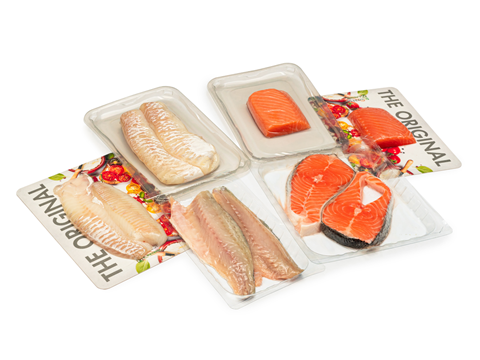
SEE is releasing three new skin packaging top webs with its sights set on improved performance, cost efficiency, and plastic reduction for food packaging.
Apparently, the webs offer a high oxygen barrier and improve a pack’s optical properties. They are also said to bring ‘exceptional’ formability to the table, as well as implosion resistance and sealability. None of these features compromise the sealability of the pack, according to SEE.
The webs are designed for compatibility with SEE’s Cryovac Darfresh on Tray, Darfresh rollstock, and Vacuum Tray Skin technologies. When applied to the Darfresh on Tray system, the top webs are thought to reduce the total packaging cost by 15-53% in comparison with Modified Atmosphere Packaging (MAP), with the exact figure varying depending on the tray’s thickness.
Furthermore, they are set to enable downgauging from the traditional 100/120 microns to 80 microns for all the skin systems. In Darfresh on Tray applications, this change is expected to decrease material usage and reduce carbon footprint by 21-37% compared to MAP – an outcome attributed to reduced food waste and tray thickness.
Compared to other tray skin materials on the market, the webs can apparently achieve a plastic reduction of 4-51% when applied to Vacuum Tray Skin technology. SEE explains that this allows manufacturers to downgauge their tray thickness.
Productivity is also expected to increase from 6 cycles per minute to 8.5 cycles per minute, thus boosting operational efficiency.
“SEE is proud to introduce these revolutionary skin packaging solutions to the market,” said Marta Lara, senior marketing manager, Food Retail, EMEA at SEE. “Our commitment to innovation, sustainability, and customer success is reflected in these new offerings.
“We believe that these enhancements will not only benefit our clients by improving efficiency and reducing costs but also contribute significantly to our shared goal of a more sustainable future.”
In a similar development, Mondi previously attended Anuga Foodtec with a paper-based solution for sliced food and a semi-rigid mono-material solution. The former is combined with a plastic top web solution, while the latter features a printed top web and a complementary thermoformable semi-rigid bottom web.
More recently, SEE released a paper-based bottom web designed to help food processors and retailers cut down on their plastic usage and meet consumer demand for paper-based packaging; and ProAmpac’s 90% fibre-based, high-barrier thermoforming solution can apparently be paired with its high-barrier top web solutions with paper texture for a premium, sustainability-minded pack.
If you liked this story, you might also enjoy:
How are the top brands progressing on packaging sustainability?
The ultimate guide to global plastic sustainability regulation
















No comments yet